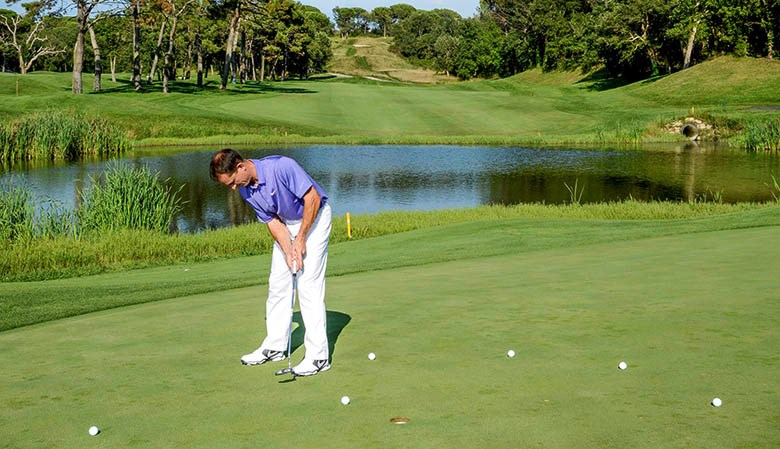Sharpen your short putting
Published:
As a rule, golfers are far more effective putting for par than birdie. We tend to hole our share of six-footers to save par, but similar birdie putts don’t drop. This is often because a par save is more familiar to us, so feels more routine and achievable; a birdie represents a rare opportunity to gain ground, so feels more important.
The pressure cranks up a notch and the stroke gets a little more tentative. This is understandable, but it makes no sense because both shots are worth exactly the same – one shot. So to improve your performance on birdie putts – and indeed any putt that feels more important – you need to create a clearer perspective on its value. Here’s a drill to help you do just that.
The ‘Par/Birdie’ putting drill Set up nine putts in a circle, no more than 8ft from the cup. Hit each putt in turn. The first is for birdie, the second for par, the third for birdie, the fourth for par… and so on all the way round. Make sure you go through your regular pre-shot routine for each putt. Even go to the trouble of marking and replacing the ball. Approaching each putt with the same routine will help you assign a similar value to birdie and par putts alike. Hole-out each ball and keep your score.
The best you can do is -5; the worst, assuming no daft three-jabs, is +4. Record your scores and set out to challenge your personal best each time you do the drill. This allows you to simulate on-course scoring pressure and monitor your progress.

